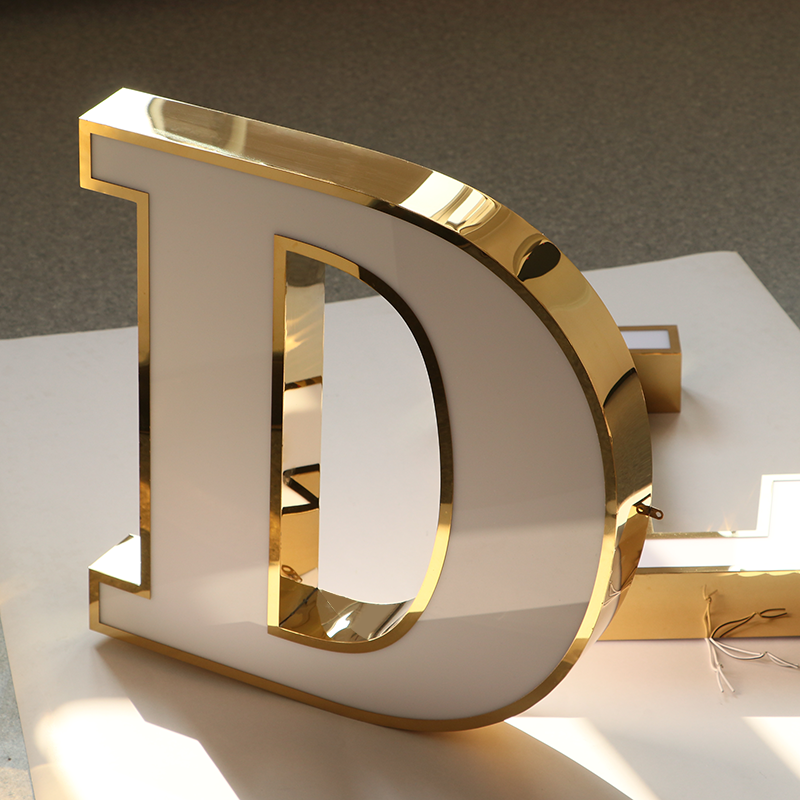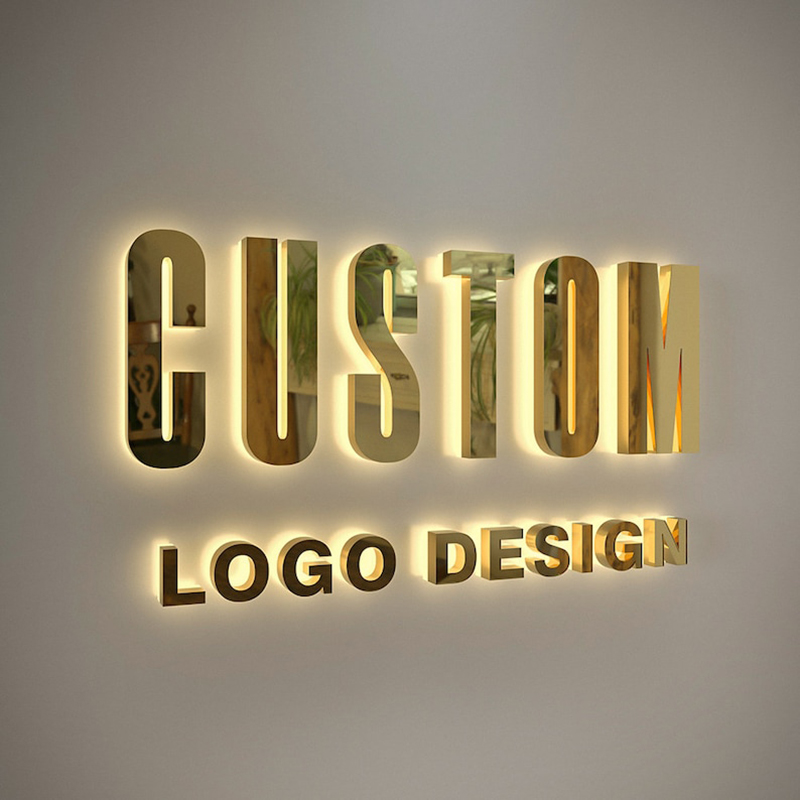Why Electroplated Signs Are the Premium Choice for Brand Identity: A Deep Dive from Aesthetic Appeal to Longevity
In the realm of brand visual communication, the design and craftsmanship of logos play a pivotal role in shaping a brand’s professionalism and lasting impression. Electroplated signs, with their distinct metallic sheen and robust durability, have emerged as the top choice for high-end brands. This article delves into the core advantages of electroplating versus baked paint, analyzing their performance across aesthetic appeal, design flexibility, and long-term durability.
I. Aesthetic Excellence: Metallic Radiance vs. Color Versatility
Electroplated Signs
Electroplating employs electrolysis to deposit metal layers (e.g., nickel, chrome, gold) onto substrates, creating mirror-like or matte finishes with striking reflective properties and three-dimensional depth. For instance, stainless steel electroplated signs can achieve brushed or mirrored effects, while dual-color PVD technology enables gradient hues, aligning with luxury brands’ pursuit for opulence.
Baked Paint SignsBaked paint involves spraying and curing paint at high temperatures, offering broader color customization (e.g., Pantone matching). However, the organic paint layer results in muted gloss compared to electroplating. While acrylic baked paint can mimic metallic finishes, it lacks the texture and scratch resistance of genuine metal coatings.

Verdict: Electroplating exudes sophistication, ideal for tech and luxury brands. Baked paint suits vibrant, cost-effective designs but risks fading over time.
II. Design Adaptability: Precision vs. Flexibility
Electroplating’s Precision Demands
Electroplating requires dust-free environments and multi-step processes (e.g., rack plating, barrel plating), demanding flawless substrate surfaces. Any imperfections may lead to uneven coatings. However, its metallic nature ensures sharp edges for intricate geometric or fine-line logos.
Baked Paint’s PracticalityBaked paint (e.g., low-temperature enamel, Teflon) accommodates diverse substrates (acrylic, metal) and supports small-font designs (minimum 2mm strokes). Yet, complex 3D structures may suffer from inconsistent color coverage, relying on manual welding or carving.

Verdict: Electroplating excels in intricate designs but requires stringent quality control. Baked paint is budget-friendly but less reliable for detailed patterns.
III. Durability: Weather Resistance vs. Long-Term Stability
Electroplating’s Resilience
Metal coatings (e.g., chrome-plated stainless steel) offer superior corrosion, abrasion, and heat resistance, with surface hardness exceeding HV600. They withstand UV rays, acid rain, and physical wear, making them suitable for outdoor and industrial applications.
Baked Paint’s LimitationsOrganic resin-based baked paint, despite heat curing, may chip or yellow under UV exposure. Acrylic baked logos, for example, are prone to moisture damage and require frequent maintenance.

Verdict: Electroplated signs last over a decade, ideal for permanent signage. Baked paint is best for short-term indoor use.
IV. Application Scenarios & Brand Strategy
Electroplated Signs
Ideal for luxury, automotive, and tech brands seeking premium finishes. Common in storefronts, product nameplates, and high-end exhibitions.
Baked Paint SignsSuitable for retail, events, or budget-conscious projects. Opt for high-temperature enamel for enhanced durability.

Conclusion
Electroplated logos represent a strategic long-term investment for brands prioritizing elegance and endurance. Meanwhile, baked paint delivers flexibility and affordability for temporary or colorful needs. By aligning process selection with brand identity and usage scenarios, businesses can maximize their visual impact and ROI.
Ready to elevate your brand’s image? Explore our electroplated and baked enamel logo solutions tailored to your needs.




